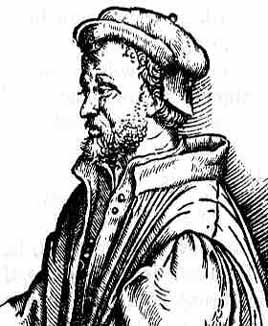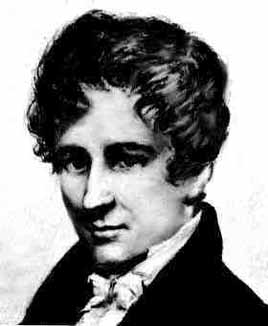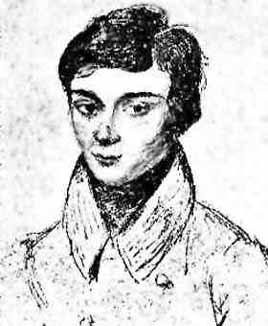where the a's are Real Numbers and n is a positive integer. If an is non-zero, we say the Degree of the Polynomial is n.
The simplest of these equations is the Linear Polynomial Equation ax + b = 0. The solution of it is known since ancient time to be x = -b/a. The Quadratic Equation, ax2 + bx + c = 0, has Degree 2 and it's solution is known to the Babylonians around 2000 BC. By using a method called "completing the square", we easily obtain the solution
When n = 3, we call it a Cubic Equation, ax3 + bx2 + cx + d = 0. Omar Khayyam (1048-1131) fully solved these equations using geometric constructions and Conic Sections in his work Treatise on Demonstration of Problems of Algebra. The algebraic solution was a great challenge to mathematicians. In fact, it proved so tough that the Italian mathematician, Luca Paciola (1445-1509), wrote in his work, Summa de Arithmetica (1494) that the General Cubic Equation is unsolvable. We now know this is wrong and that the solution is obtained in the 16th century. Before that, people had to settle with solving special cases of the cubic. Scipione del Ferro (1465-1526) could solve the "depressed cubic", ax3 + cx + d = 0. However, he kept it a secret, because in that period in Italy, new discoveries were used as weapons against opponents in contests. del Ferro kept it an absolute secret until just before his death, he handed the solution to his student, Antonio Fior (born 1506). Later, Fior was challenged by Niccolo Fontana (1499-1557), better known as Tartaglia, the Stammerer. He was so called because his speech was impaired by a serious sword wound when he was a teenager. Fior retaliated with 30 problems on depressed cubics. After much effort, Tartaglia solved the problems (solving one amounts to solving all), causing Fior to disappear into obscurity.
| Girolamo Cardano (1501-1576), obviously must have heard of the contest, requested Tartaglia for the solution to the depressed cubics. After several failed requests, Tartaglia released the solution to Cardano on the condition that the latter do not publish the result or pass on to others. With this newly-obtained tool, Cardano was able to solve the General Cubic Equation once and for all. Cardano shared the solution with his student, Ludovico Ferrari (1522-1565), who went on to solve the Quartic Equation, ax4 + bx3 + cx2 + dx + e = 0 in 1540. In 1543, Ferrari and his tutor examined del Ferro's papers and found that he has solved the depressed cubic before Tartaglia. So Cardano decided to publish the result in 1545 in his famous book Ars Magna, and gave major credit to del Ferro, instead of Tartaglia. This led to a bitter dispute between Cardano and Tartaglia. While studying his cubic solutions, Cardano stumbled upon the Complex Numbers and although he did not understand them, he would do calculations on them (see The Story of Complex Numbers). |  |
The solutions of Polynomial Equations up to the Quartic are expressible in radicals. A radical is a formula involving only the 4 basic arithmetic operations and the extraction of roots. Although the Quartic has been solved in the 1500s, the Quintic (Degree 5 Equation) remained a puzzle for the next 300 years. The reason being that everybody thought that the quintic is also solvable in radical. In 1799, Italian Paolo Ruffini (1765-1822) tried to prove that it is unsolvable using Group Theory, but there was a gap in the proof. The problem had to wait until 1824 when Niels Henrik Abel (1802-1829) provided the first correct proof of the unsolvability. �variste Galois (1811-1832), a mathematical genius with extremely poor luck, independently proved the unsolvability using his Galois Theory. Galois Theory is strongly dependent on Group Theory and Field Theory, and has far-reaching implications beyond its original purpose. In particular, it can be used to determine which equations can and which cannot be solved by radicals. As such, we now know that the General Deg 5 and above Polynomial Equations are unsolvable. A few words about the plight of these three mathematicians (Ruffini, Abel and Galois) are in place.
Ruffini made great contributions to Group Theory. He is the first to introduce the notion of the order of an element, the cycle decomposition of permutation group elements, and the notions of primitive and inprimitive, among others. He developed these concepts for the purpose of resolving the quintic puzzle. In 1801, he sent his paper to Lagrange several times, but each time there was no response. Then in 1803, he publiched a simpler proof, but no one seemed to understand his proof. So in 1808 and 1813, he published further proofs. Ruffini kept trying to have his work recognised by the mathematical community. The last proof is essentially what was later called the 'Wantzel modification of Abel's proof' (1845). In actual fact, except for one gap, Ruffini would have proved the unsolvability. If some mathematician had written to him showing him there was an error or even a gap in the proof, then at least Ruffini would have got a chance to remedy it. However, there was an extreme lack of response to Ruffini's work.
| Abel is a Norwegian. He provided the first solution to an integral equation. In 1824, he proved the unsolvability of quintic. He also produced Abel's Theorem which is a vast generalization of Euler's relation for Elliptic Functions. His hope for a constant income depended on the post of Mathematics professor in the only university in Norway. But it was taken up while he was away in Berlin. He began worrying for his future. At a point in time he could only affort a meal per day. Soon his health deteriorated and he was heavily in debt. Meanwhile, he continued doing Mathematics. He transformed the theory of Elliptic Integrals to that of Elliptic Functions via their inverse functions. In 1827, he was appointed a post and his situation improved a little. In 1828, he produced a memoir, but this was subsequently lost. When it was found in 1952, it was realized that he had proved an important theorem, which Galois also proved in his famous memoir of 1830. In 1829, Abel became seriouly ill and died soon after. |  |
 |
Galois displayed extraordinary mathematical talent at the age of 14. Before his acceptance into the �cole Normale in 1829, he applied for the more prestigous �cole Polytechnique but was rejected several times. This is due to his hot temper and the failure of the examiners to recognize his genius. In 1829, he submitted 2 papers on the solution of algebraic equations to Cauchy who subsequently lost them. A third paper was submitted to Fourier, who died before reading the paper. Another was presented, but this was not published until 1846. Then, he got heavily involved in the 1830 revolution and was expelled from school and sent to prison. After his release, he was drawn into a duel over his lover. On the night before the duel, he hastily jotted down his works and the basic ideas involved, and sent it to his friend Chevalier. He died the next day at the age of 21. |
Galois Theory can be readily used to prove the Fundamental Theorem of Algebra. This theorem states that every Deg n Polynomial has n linear factors. It is sometimes also stated in the following equivalent form: every Deg n Polynomial Equation has n (possibly equal) roots. This theorem was first proved by Carl Friedrich Gauss (1777-1855) in his doctoral thesis. It could also be proved using Complex Analysis.
Finally, we'll take a look at the relationship between evolution of Numbers with regard to Polynomial Equations. The first Numbers used by man are the Whole Numbers or Counting Numbers (1, 2, 3, ...). This is followed by the Rational Numbers, then the Irrational Numbers, the Negative Numbers and finally the Complex Numbers.
| Numbers | Example | Corresponding Polynomial Equations |
| Whole Number | 2 | 2x = 4 |
| Rational Number | 3/2 | 2x = 3 |
| Irrational Number | √2 | x2 = 2 |
| Negative Number | -1 | x + 2 = 1 |
| Complex Number | √-1 or i | x2 = -1 |
Return to Maths Homepage